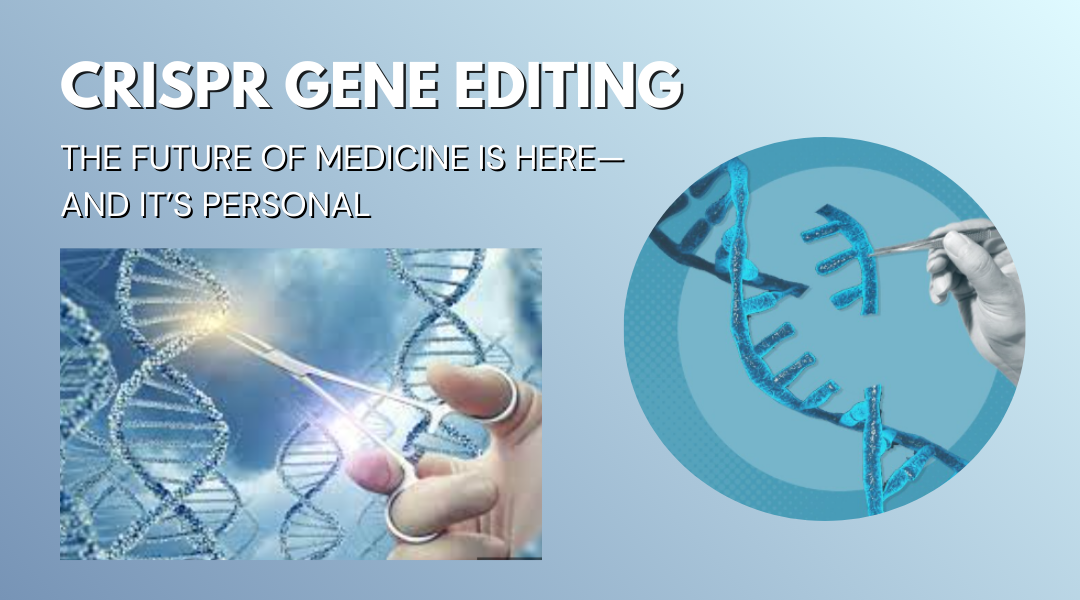Introduction: A Genetic Revolution in Our Hands
Imagine a world where diseases like sickle cell anemia or cystic fibrosis aren’t lifelong sentences but fixable typos in our DNA. Thanks to CRISPR-Cas9, that future isn’t science fiction—it’s unfolding in labs and clinics right now. Born from a clever bacterial immune defense, this gene-editing tool has become medicine’s most precise scalpel, letting scientists rewrite genetic code with unprecedented accuracy.
How CRISPR Works: Cutting, Pasting, and Healing
At its heart, CRISPR is a molecular GPS paired with scissors:
- Guide RNA (gRNA): A custom-designed strand that hunts down a specific stretch of DNA, like a search function for the genome.
- Cas9 Enzyme: The cut-and-paste tool. Once the gRNA leads Cas9 to the target, it snips the DNA, allowing edits—whether that’s removing a harmful mutation, inserting a healthy gene, or tweaking a faulty sequence.
After the cut, the cell’s natural repair team takes over. Researchers can then:
- Fix typos: Correct single-letter mutations (like those causing sickle cell).
- Replace entire sections: Swap out disease-causing genes for healthy versions.
- Turn genes on/off: Adjust gene activity without altering the DNA itself.
Why CRISPR Beats Older Methods
Before CRISPR, editing genes was like building a watch with oven mitts—clunky and slow. Techniques like ZFNs and TALENs required custom proteins for every edit, costing years and millions. CRISPR changed the game because:
- It’s fast: Design a new guide RNA in days, not months.
- It’s cheap: Labs can run experiments for thousands, not millions.
- It’s universal: Works in plants, mice, humans—even tardigrades.
Real Patients, Real Results
CRISPR isn’t just theoretical. It’s already helping people:
- Sickle Cell Disease: In a 2023 trial, 30 patients received CRISPR-edited stem cells. Over 90% saw severe pain crises vanish. One teenager, bedridden for years, now plays basketball.
- Leber’s Blindness: Doctors injected CRISPR into retinal cells, restoring light perception in patients who’d been blind for decades. One woman recognized her daughter’s face for the first time.
- Cancer Fighters: Engineers are using CRISPR to supercharge immune cells, turning them into cancer assassins. Early trials show remission in stubborn leukemias.
The Ethical Tightrope
But with great power comes big debates:
- Mistakes matter: CRISPR can misfire, editing the wrong gene (like accidentally deleting a tumor suppressor). Newer versions, like “prime editing,” aim to reduce errors.
- Designer babies: Editing embryos could erase diseases—or lead to ethically murky enhancements. After the 2018 scandal of CRISPR-edited twins in China, global bans tightened, but the tech is advancing faster than laws.
- Who gets it? Will CRISPR cures be available to all or just the wealthy? A one-time sickle cell treatment costs $2 million today.
What’s Next?
The field is sprinting forward:
- Epigenetic editing: Tweaking gene activity without cutting DNA—like a volume knob for genes.
- Viral delivery: Using harmless viruses to ferry CRISPR into specific organs (e.g., the brain for Alzheimer’s).
- Farming 2.0: Drought-resistant crops and allergy-free peanuts are already in field tests.
The Bottom Line
CRISPR isn’t perfect, but it’s the closest we’ve come to rewriting life’s code. The next decade will decide whether it becomes medicine’s greatest tool—or a Pandora’s box. One thing’s certain: the future of healing will be written in DNA.
